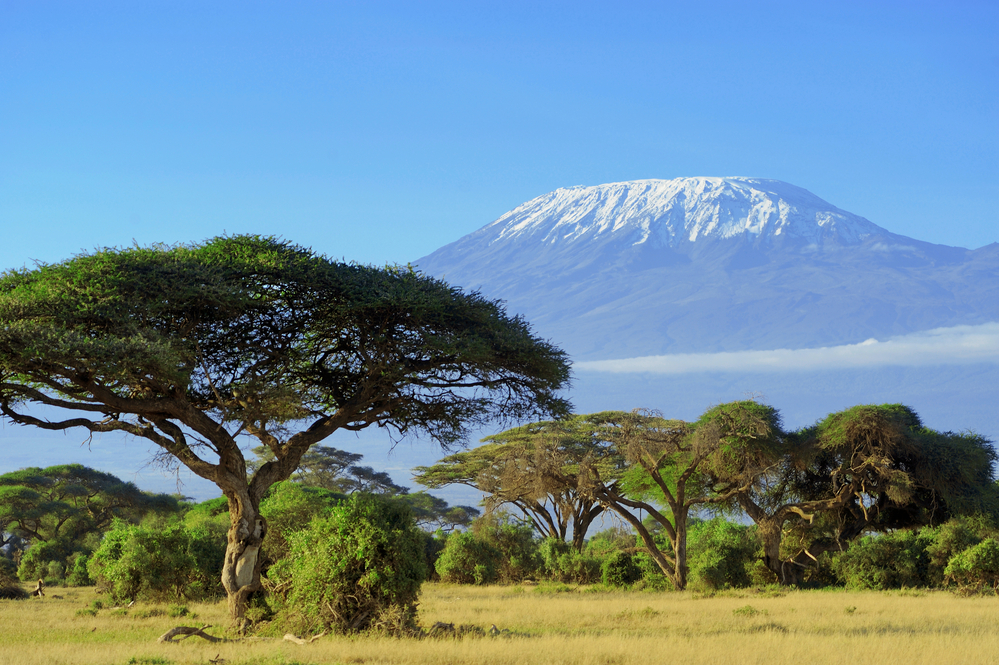Many of us like the thought of climbing a mountain. It’s one of those bucket list desires that usually doesn’t get realized. Fortunately, Mount Kilimanjaro is accessible to mere mortals like us, without the need for ropes, pitons, and years of climbing experience. All you need are a decent pair of legs and some determination. Getting to the summit is more of a trek or hike than a climb. You can hike with a group of friends with planning and preparation, but the easiest way is to choose a Kilimanjaro tour operator that guides individuals or groups up and down the mountain. In this way, you can achieve one of those dreams on that list.
Mount Kilimanjaro
Mount Kilimanjaro is situated in the Kilimanjaro National Park in the United Republic of Tanzania on the east coast of Africa and is part of the Eastern Rift Mountains in the African Great Lakes region. At 19,341 ft. or 5,895 meters, it is the highest peak in Africa. It is a dormant volcano with three cones and has seven summits. The highest summit is called Kibo or Uhuru Peak. There are six routes used for hiking Kilimanjaro. The shortest and steepest is Umbwe at 23 miles. The longest and newest way is the Northern Circuit, which is 56 miles in length. Over 50,000 people per year climb the mountain. A feat considered difficult but not challenging.
Safety
Mount Kilimanjaro takes no mountaineering expertise to scale. Mountaineers claim that any child of over 10 through to senior citizens in their 70s can climb Kilimanjaro. So, as with any adventure tourism, there are risks involved. If there were an easy drive to the top, it wouldn’t be worth it, would it?
The main problem with hiking Kilimanjaro is acclimatization and altitude sickness. The hike leader or tour operator’s priority is the health and safety of their clients. With a Kilimanjaro tour operator, clients are requested to fill out a comprehensive medical questionnaire. It is also advisable to consult a doctor before booking with a trekking company, especially if you have underlying heart or respiratory conditions. Also, remember that it is a remote location, which adds to the potential risk factor.
Guides
One of the reasons to choose a Kilimanjaro trekking company is that the guides aren’t only knowledgeable and experienced with the routes and areas they take you through but are also trained to detect altitude sickness and treat it. Many attended Wilderness First Responder courses for in-depth high altitude medical training and carried the correct equipment to deal with medical problems. They also carry out daily one-on-one health checks. Parties may consist of one guide to every two climbers, so it is easier to monitor each client’s condition throughout the climb. Altitude sickness symptoms are explained at the beginning of the trek, but it is vital that you report to your guide immediately if you are suffering from any of them.
Why Climb Kilimanjaro?
In the first place, just because it is there. Second, for the sheer adventure of climbing a mountain and especially the highest one in the whole continent. It is about the sense of achievement you feel once you have conquered the climb. Added to that are the fantastic vistas that you will see. There is plenty of fresh air and exercise. Besides which there is all the incredible wildlife that you may see too. You may see Bush Babies, White Necked Ravens, Colobus or Blue Monkeys, and Four Striped Mice. There are seven animals that are unique to Mount Kilimanjaro. They are Aardvarks, Abbott’s Duiker, Crested Porcupines, Tree Hyrax, Civets, Servals, and Genets. On top of that, there is the companionship of other hikers on the trails.
The Routes
Climbing Mount Kilimanjaro is doable, but it isn’t a walk in the park. It isn’t for those that give up easily. Each of the routes has its level of challenge. Around 1,000 of those that attempt hiking Kilimanjaro every year are evacuated from the mountain. Although you don’t have to spend a year in the gym to be fit enough to climb it, it certainly helps if you are in decent shape. Because of the terrain and distances involved, overnight stays are necessary. With a Kilimanjaro hiking company, accommodation in huts and catering is provided. The trekking tours last between 5 to 9 days, depending on which route and duration of the hike you decide to choose.
Marangu and Umbwe
Both of these are the quickest but also the steepest climbs. They both have fewer success rates for reaching the summit because these routes don’t give much time to the climber to become acclimatized to the altitude, which can cause problems. They are only recommended for those that are very fit and who wish to test their stamina and endurance.
Machame, Shira/Lemosho, Rongai and the Northern Circuit
These other routes have a greater success rate of gaining the summit because the hikes are longer and the ascents are more comfortable. This gives hikers more time to become acclimatized to the altitude. Acclimatized bodies have greater endurance.
Recommendations
Kilimanjaro tour operators recommend which routes for potential clients to take based on their general fitness level and the pace with which they wish to travel. Mount Kilimanjaro and its surroundings are there to be enjoyed and can be without undue exertion or stress.
Your Next Adventure?
Ready to strike another item off that bucket list? Thinking of taking up mountain climbing? If so, Mount Kilimanjaro is the best place to start. This is a once in a lifetime opportunity and experience, so grab it with both hands. Boast to your family and friends that you have climbed a mountain!
This is a Contributor Post. Opinions expressed here are opinions of the Contributor. Influencive does not endorse or review brands mentioned; does not and cannot investigate relationships with brands, products, and people mentioned and is up to the Contributor to disclose. Contributors, amongst other accounts and articles may be professional fee-based.

